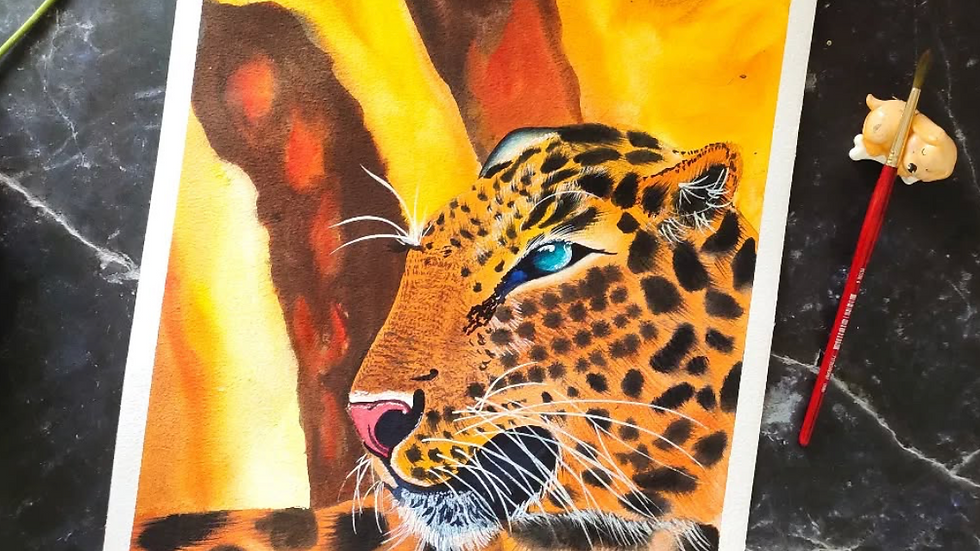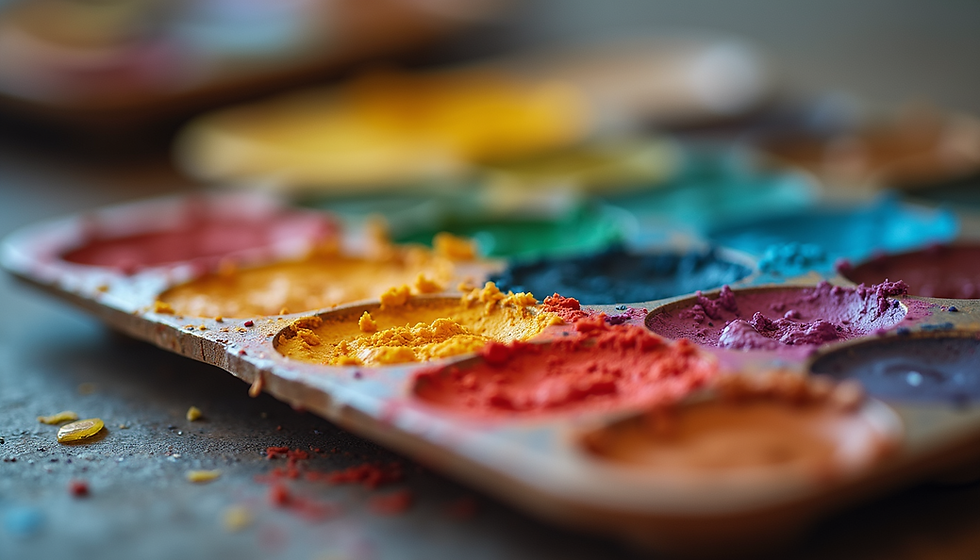🎨 The First Paintings I Sold — And Why They Didn’t Feel Like Wins
- Kriti Tiwari - lostloveforart

- May 24
- 3 min read
Updated: Jun 17
The first time I sold my paintings felt like a high. It happened at a small café gallery exhibition — my first public display. I had paid for my slot, printed frames, and packed magnets. Nervously, I arranged my table. I remember thinking:

“I just need to recover the cost.”
And I did. Not only did I sell two original paintings, but I also sold a handful of fridge magnets and pop sockets. That evening, I smiled on the outside… and on the inside too. It felt like a success. My first “real” moment as an artist.
Reflections on an Early Sale
Weeks later, I was listening to a podcast on pricing creative work. The host said something that stopped me cold:
“When you price from fear, you don’t just undervalue your work — you teach others to do the same.”
I paused the episode. Suddenly, I saw that café exhibition differently.
Selling from Anxiety
I hadn’t sold from confidence. I had sold from anxiety. Every price tag I’d placed came from a belief that:
“No one will buy expensive work here.”
“People just want cute, quick things.”
“Just cover the costs — that’s enough.”
So I made “easy to sell” items: ₹400 pop sockets, mini prints, and underpriced originals. And they sold.
However, when I sat quietly and looked at the whole picture, I realized something hard: I wasn’t proud. I was just relieved. And that’s not the same thing.
The Cost of Survival Mode
When you sell from survival mode, it robs the sale of joy. I had been operating from money blocks — old fears about what art is “worth” and what people will “pay.” I didn’t believe my work was valuable, so I made it smaller — literally and figuratively.
Sure, that approach helped me recover costs. But it didn’t make me feel like an artist. It made me feel like a pop-up vendor.
A New Approach to Selling
Now, I sell differently. I paint slowly, with reverence. I price not for the crowd — but for the connection. I ask myself:
“What did this piece cost me — emotionally, mentally, spiritually?”
“What kind of space is it meant to live in?”
“Is this price an act of respect — for me and the art?”
And if it doesn’t sell immediately? That’s okay. Because now, I’m not trying to be affordable — I’m trying to be honest.
Empathy for Fellow Artists
To every artist who’s sold too soon, too low, or too anxiously — I see you. We don’t talk enough about the pressure to prove ourselves early. We often overlook how validation can wear a price tag too small to hold our truth.
So, no, I don’t regret my first sale. But I do honor the version of me who thought she had to shrink to be accepted. I’m grateful for that podcast, for that moment. Because maybe… that’s when I finally began to sell — for real.
Finding Your Worth as an Artist
As artists, understanding our worth is essential. Recognizing the emotional and mental work that goes into our art is vital. This awareness can reshape how we interact with potential buyers.
Building Confidence in Your Pricing
Reflect on the process: Take time to think about what your art means to you. This understanding will help you set a fair price.
Consider your emotions: Are there feelings attached to your creations? Let those feelings guide your pricing strategy.
Price with respect: Approach pricing like a conversation. Your artwork deserves respect, and so do you as the creator.
The Journey Beyond Sales
Remember, your worth isn't solely defined by the number of sales made. The connections you foster and the experiences you share as an artist are priceless. Embrace the journey.
Explore Further
🎨 Want to explore further?
Why I Left IT to Become a Full-Time Artist→ https://www.krititiwariart.com/post/why-i-left-it-to-become-a-full-time-artist
View My Originals — Priced With Soul→ https://gallery.krititiwariart.com/home
Commission a Custom Painting→ https://gallery.krititiwariart.com/home



Comments